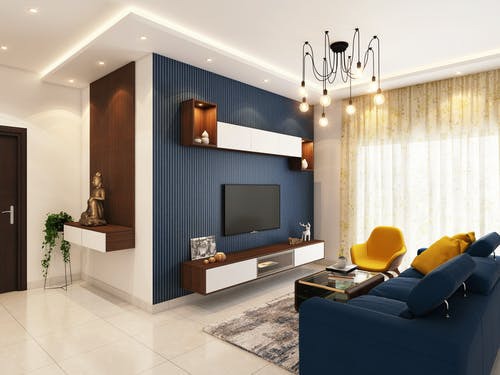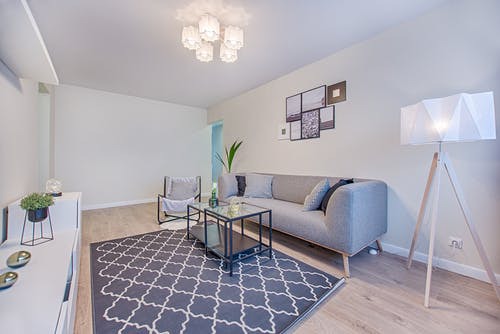
Have you ever walked into a room and instantly noticed how one piece of furniture can set the entire mood? Designer chairs have a magical way of doing just that. Whether you love modern minimalism, curated eclecticism, or timeless tradition, the right chair can make your space feel more intentional, inviting, and undeniably stylish.
But with so many options out there, choosing designer chairs that truly complement your décor can feel overwhelming. Don’t worry! This guide will provide all the essential insider tips you need without complicated jargon. Let’s walk through the process step by step and help you find that perfect chair (or two!) for your home.
Understanding Your Space and Your Needs
Assess Your Room’s Size and Layout
Before you start scrolling through endless chair options online, pause to think about your space. Huge armchairs might swallow a petite living room, while sleek dining chairs can get lost in a spacious, open-plan kitchen. Get out your measuring tape and take note of these elements:
-
Floor space: How much room do you have for a chair without crowding?
-
Traffic flow: Will the chair block pathways or doors?
-
Other furniture: Think about table heights, sofa armrest levels, and where your chair will sit in relation to other pieces.
Identify Function and Usage
Not all designer chairs are created equal when it comes to function. Ask yourself:
-
Will this chair be for lounging, dining, working, or occasionally pulling up for extra guests?
-
Do you need it to be lightweight and movable or sturdy and substantial?
-
Is ergonomics a top priority, or do you value aesthetics over comfort?
Knowing its primary role will make narrowing down your options a lot easier.
Choosing Your Preferred Design Style
Designer chairs come in a dizzying array of shapes, colors, and materials. While trends are fun to follow, it’s most important that the chair you pick feels like “you” and complements your décor story.
Define Your Style Vocabulary
Here are a few popular categories to consider:
-
Mid-century modern: Clean lines, tapered legs, and simple forms.
-
Contemporary: Sleek silhouettes, bold geometric shapes, minimalistic features.
-
Traditional: Ornate details, rich wood finishes, and plush upholstery.
-
Industrial: Exposed metal, leather, and raw wood elements.
-
Eclectic or Boho: Mixes of colors, worlds, and textures.
Grab some inspiration pictures, sample fabrics, or color swatches, and get playful before making the plunge—your instinct matters!
Paying Attention to Color and Texture
Matching or Contrasting Colors
Should your designer chair blend seamlessly or stand out as a bold accent? The answer depends on your décor goals:
-
Match for cohesion: Choose colors from your existing palette for a harmonious and tranquil space.
-
Contrast for drama: Pick a statement shade or striking pattern to make your chair shine as a focal point.
Mood-Boosting Materials
Texture makes an enormous impact, even in small doses. Try to balance hard and soft surfaces to keep the room visually interesting:
-
Pair plush velvet with glossy lacquered wood
-
Mix smooth leather seats with rough linen cushions
-
Choose natural cane or rattan for a breezy, organic feel
Selecting the Right Materials for Lifestyle and Longevity
Considering Daily Wear and Tear
Some materials wear better than others, so think honestly about how much maintenance you’re willing to do. For example:
-
Leather: Durable, easy to wipe clean, but can scratch and fade if exposed to sunlight.
-
Fabric: Cozy and inviting, but may stain—look for stain-resistant finishes if possible.
-
Wood: Warm and classic but requires care to avoid dents and scratches.
-
Metal: Sleek and modern, can show fingerprints or dings if not powder-coated.
Eco-Friendly and Sustainable Options
If you’re passionate about sustainability, look into chairs made from reclaimed wood, responsibly sourced fabrics, or recycled plastics. Today’s designers get pretty creative, combining environmental consciousness with chic style.
Blending With or Standing Out From Existing Décor
Harmonize for Visual Flow
If you prefer a unified look, pick a designer chair that echoes themes or materials already present in your room. For instance, a walnut-framed chair can mirror wooden beams or flooring.
Create a Signature “Wow” Moment
Sometimes, introducing a chair that completely contrasts with your current décor is what gives a room its soul. Maybe it’s a luxe velvet club chair in an all-neutral space or a wildly shaped modern piece set among traditional furnishings.
The trick is to keep the rest of your palette calm or coordinate one or two details, like a throw pillow or rug color, to tie it all together.
Evaluating Comfort and Ergonomics
Sitting Pretty: Form and Function
Looks aren’t everything. Comfort should always be a top priority when selecting designer chairs, especially if you’ll be using them every day. Here’s how to test comfort:
-
Sit down! Your feet should touch the floor, with knees at a 90-degree angle.
-
Test armrests: Are they the right height for reading or relaxing?
-
Check lumbar support: This is particularly important for desk or dining chairs.
-
Feel the padding: Too soft and you’ll sink, too hard is uncomfortable over time.
Think About Special Features
Reclining mechanisms, swivel bases, or even built-in charging ports can turn a simple chair into your new favorite spot.
Integrating Designer Chairs Into Every Room
Living Room Lounging
Armchairs and accent chairs are living room staples. Consider pairs for symmetry, or mix and match for a relaxed, gathered look. Keep scale in mind—oversized chairs work best in larger rooms.
Dining Room Delight
Dining chairs should be sturdy and comfortable enough for long meals. To add variety, mix upholstered head chairs with simpler wood or metal sides.
Bedroom Corners
A cozy armchair or slipper chair tucked beside the window invites reading and daydreaming. For extra personality, try bright upholstery or sculptural lines.
Entryway Statements
Welcome guests with a unique chair or bench in your entryway—it’s a perfect drop spot for bags and shoes and a great way to showcase your aesthetic right from the start.
Budgeting and Investing in Pieces That Last
Set Your Budget Wisely
It’s tempting to splurge on a piece you love, but think about your overall budget and prioritize the rooms you use most. Sometimes, investing in a single high-quality designer chair is better than purchasing several less expensive, trend-driven ones.
Value of Iconic and Timeless Designs
If you’re looking at vintage or high-end pieces, compare materials, construction, and reputation for durability. An investment in a classic chair can pay off through years of daily enjoyment and even become a cherished heirloom.
For example, some dealers offer Stressless furniture for sale as a blend of ergonomic comfort and durability, proving how timeless craftsmanship can elevate both style and function in any space.
Experimenting With Mix and Match Techniques
How to Mix Styles Without Clashing
-
Stick to a common color palette, so different chair styles still feel related.
-
Pair ornate designs with simple, modern pieces to avoid overwhelming the space.
-
Repeat one or two materials (like metal or wood) in different silhouettes for cohesion.
-
Think about proportion—avoid mixing chunky with ultra-slim chairs at the same table.
This strategy lets each piece shine while contributing to a collected, curated look.
Shopping Tips for Finding Your Perfect Designer Chair
Try Before You Buy
Whenever possible, test out chairs in person. Pictures are helpful, but nothing beats the real feel. Spin it, rock it, recline—whatever the design allows. See how it looks with your room’s lighting and existing colors.
Read Reviews and Research
Don’t skip user reviews! They’ll often reveal if a chair is durable, wobbly, or prone to fabric issues. Also, don’t shy away from asking about return policies, warranties, and care instructions.
Suppose you’re browsing designer chairs in Philadelphia, PA. In that case, you’ll find local stores that allow you to experience the craftsmanship up close, ensuring your choice aligns perfectly with your design goals and comfort preferences.
Inspiration From Iconic Furniture Collections
Sometimes, browsing curated collections can spark ideas or help you visualize how a specific style works in your home. Look for collections that emphasize heritage, craftsmanship, and innovation.
Furniture lines such as Stickley collections are well-known for their blend of traditional artistry and timeless design, making them a smart reference when searching for chairs that blend seamlessly with a variety of interiors.
Final Thoughts
At the end of the day, selecting designer chairs that complement your décor is a mix of science and art. Trust your measurements, research, and—most importantly—your instincts. Prioritize comfort, invest in quality where it counts, and don’t be afraid to let your personality shine. With these tips, you’re well on your way to finding that standout piece that will take your décor to the next level. Happy chair hunting!























































